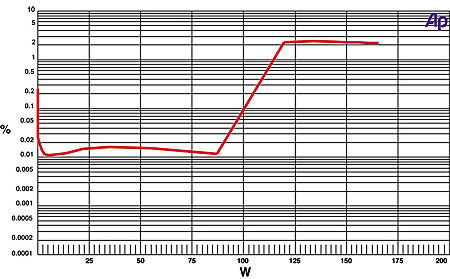To finish
-too late here, Tarragona (Spain), some hours ago I posted in a very audiophile forum:
Re: Can anyone suggest a way to find older copies of cds w/ dynamic range?
https://www.audiocircle.com/index.php?topic=160554.msg1717992#msg1717992
The Cars - Shake It Up (1981), CD, Elektra, Germany
DR Peak RMS Duration Track
--------------------------------------------------------------------------------
DR12 -1.52 dB -15.79 dB 3:31 01-Since You're Gone
DR12 -1.87 dB -16.04 dB 3:32 02-Shake It Up
DR12 -2.35 dB -16.81 dB 4:10 03-I'm Not the One
DR13 -3.09 dB -18.62 dB 4:25 04-Victim of Love
DR15 -1.82 dB -17.65 dB 4:57 05-Cruiser
DR14 -1.91 dB -18.58 dB 5:40 06-A Dream Away
DR13 -2.36 dB -18.42 dB 4:27 07-This Could Be Love
DR12 -2.04 dB -16.59 dB 4:56 08-Think It Over
DR13 -1.60 dB -17.69 dB 5:03 09-Maybe Baby
--------------------------------------------------------------------------------
Number of tracks: 9
Official DR value:
DR13
The Cars - Shake It Up (1981) CD, Rhino, Expanded Edition 2018
DR Peak RMS Duration Track
--------------------------------------------------------------------------------
DR8 -0.16 dB -10.23 dB 3:31 01-Since You're Gone (Remastered)
DR7 -0.16 dB -9.40 dB 3:32 02-Shake It Up (Remastered)
DR9 -0.16 dB -10.82 dB 4:10 03-I'm Not The One (Remastered)
DR8 -0.16 dB -10.37 dB 4:24 04-Victim Of Love (Remastered)
DR7 -0.16 dB -8.57 dB 4:57 05-Cruiser (Remastered)
DR10 -0.16 dB -11.87 dB 5:40 06-A Dream Away (Remastered)
DR9 -0.16 dB -10.56 dB 4:27 07-This Could Be Love (Remastered)
DR7 -0.16 dB -8.97 dB 4:56 08-Think It Over (Remastered)
DR6 -0.16 dB -8.33 dB 5:06 09-Maybe Baby (Remastered)
DR9 -0.05 dB -10.58 dB 5:57 10-Since You're Gone (Early Version)
DR9 0.00 dB -10.83 dB 4:10 11-Shake It Up (Demo)
DR11 -0.08 dB -12.78 dB 4:11 12-I'm Not The One (Remix) (Remastered)
DR10 -0.08 dB -10.97 dB 5:00 13-Cruiser (Early Version)
DR10 -0.07 dB -11.31 dB 6:19 14-Take It On The Run (Early Version of A Dream Away)
DR9 0.00 dB -10.31 dB 5:21 15-Coming Up You Again (1981 Version of Coming Up You)
DR9 -0.21 dB -10.65 dB 2:54 16-Little Black Egg (Remastered)
DR9 -0.07 dB -10.35 dB 4:22 17-Midnight Dancer
--------------------------------------------------------------------------------
Number of tracks: 17
Official DR value:
DR9
And the people are very satisfied!!!!!!
https://www.amazon.com/Shake-Up-Expanded-Cars/dp/B079J83X4S#customerReviews
They are many more than me, so they must be right, I say. 
